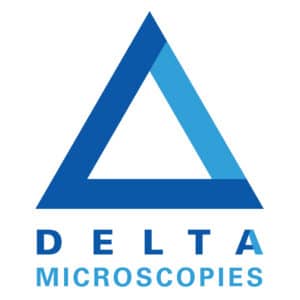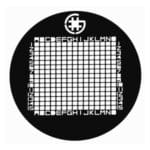Description
Thickness of gold foilThese newly developed ultrastable gold supports for electron cryomicroscopy will reduce the movement of frozen specimens during imaging. This improves image contrast and quality leading to better 3D reconstructions with less data.
During imaging at cryo-temperatures, traditional carbon supports move, particularly at the beginning of irradiation. This movement blurs images and makes it difficult to determine the structures of small and challenging molecules.
Using UltrAuFoils®, designed at MRC’s Laboratory of Molecular Biology by Dr. Christopher J. Russo and Dr. Lori A. Passmore and produced by Quantifoil Micro Tools, specimen motion can be reduced significantly. (For details see: Ultrastable gold substrates for electron cryomicroscopy, Science, 2014, Vol. 346 no. 6215 pp. 1377-1380).
Characteristics of UltrAuFoil®v
| Thickness of gold foil | About 500 Å |
| Structure of gold foil | Regular square array of micrometer-sized circular holes |
| Available geometry | R 1.2/1.3 (Other types available on request) |
| TEM grid | Gold 300 mesh (Other grids available on request) |
| Ref | Hole Shape | Hole Size | Carbon grid type | Pack | Mesh |
| Q-UltrAufoil-R0.6_1 | R 0.6/1 | 1.2µ | gold | 50/pk | 300 |
| Q-UltrAufoil-R1.2_1.3 | R 1.2/1.3 | 1.2µ | gold | 50/pk | 300 |
| Q-UltrAufoil-R2_2 | R 2/2 | 1.2µ | gold | 50/pk | 200 |
Frequently Asked Questions
Why is the foil made of gold?
Because it is a highly conductive, nonoxidizing, radiation-hard material whose surface is chemically inert and biocompatible.
Why is the foil 500 Å thick?
400-500 Å is optimal because it minimizes motion as much as thicker layers, but still gives thin ice films under typical blotting conditions. Below 400 Å the performance of the gold support foils begins to degrade.
Why is the TEM grid made of gold?
Using the same metal eliminates differential thermal contraction during cooling of the sample and therefore prevents changes in the geometry and tension of the support foil.
How should I store the UltrAuFoils® and within which time should I use them?
The UltrAuFoils® should be stored in a grid storage box, in a dark, cool and low-humidity environment. Generally there is no date of expiry, but we recommend to use them within two years.
Do I need to modify the UltrAuFoils® before use?
No, they are ready for use when delivered. They can be made more hydrophilic using standard glow discharge and plasma systems or other gold surface treatments.
How do I set up the beam for data collection?
Currently, the recommended electron beam geometry is circularly symmetric beam, centered on the hole, which encompasses a small region of the support around each hole. The micrograph is taken in the center of the hole.
How do I focus using UltrAuFoils®?
Since there is no amorphous material in the gold support structure, Thon rings cannot be used to focus. As discussed in the publication, several other options are available, but the two simplest are:
1. Turn on beam tilt wobble and minimize the image shift.
2. Look for the diffracted beams at the edge of a hole with the objective aperture removed. When the shift between the diffracted beams and the crystals of gold is minimized, the foil is in focus.
How do I correct the astigmatism?
We recommend using a calibration specimen to correct the stigmation and beam tilt prior to collecting data on UltrAuFoils®.
Can I use automated data collection methods?
Yes, automated data collection has been successfully tested on UltrAuFoils® using beam tilt to focus.
Are UltrAuFoils® fragile?
No, they are similar or less fragile than traditional carbon foils. But if mishandled with tweezers or broken during freeze plunging, the stability of the support may be severely degraded. We recommend collecting data only from squares where the foil is uniform and intact.
Can I add a continuous film of amorphous carbon?
Yes. Standard float transfer methods work fine for transferring thin films of carbon onto UltrAuFoils®.









Reviews
There are no reviews yet.